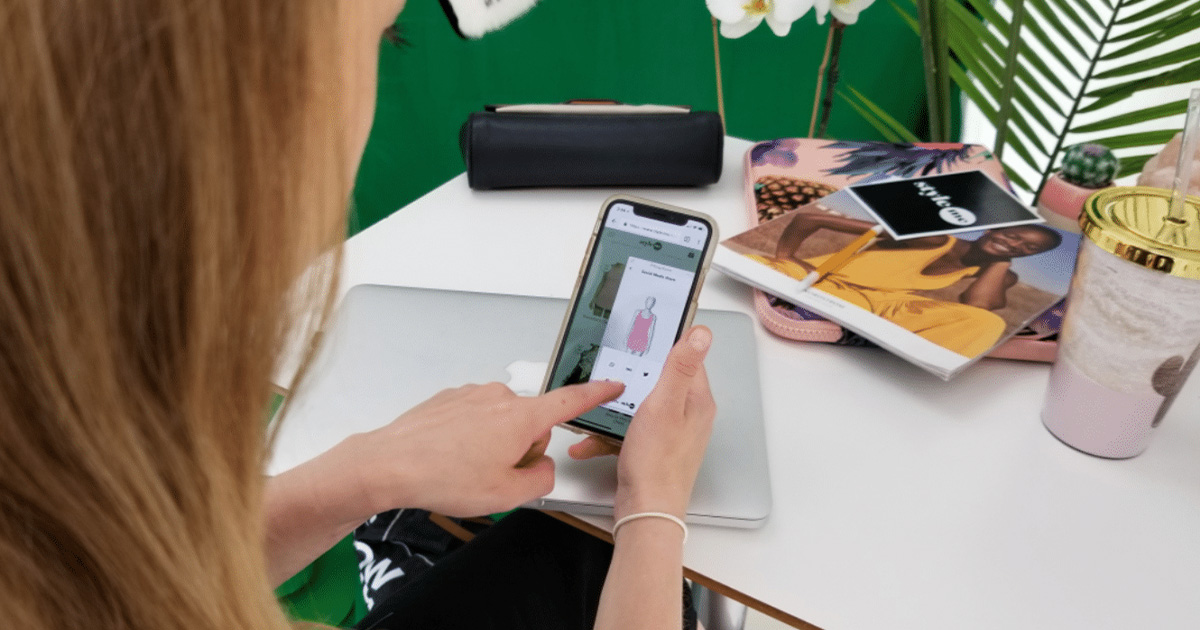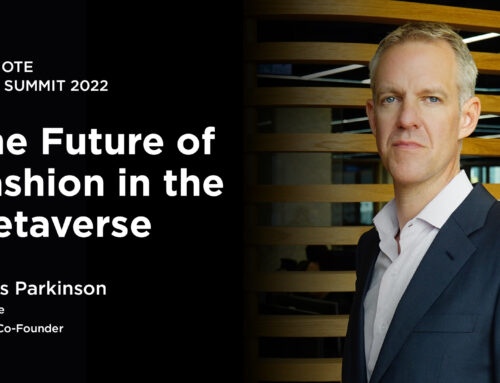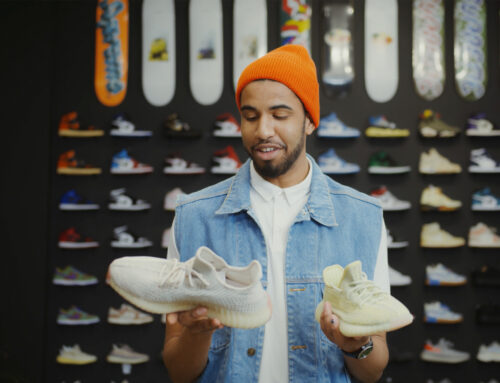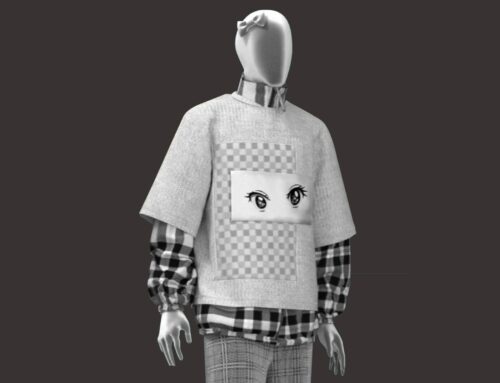WWD List 7 Ways to Solve Fashion’s Fit Problem
June 26, 2018
The future of fashion is locked away behind a very old problem — getting shoppers styles that fit. It’s a quandary retailers have long solved, or at least addressed, with the fitting room. But that lowest of low-tech options doesn’t work for e- commerce, making finding the right size a growing problem, even a lynchpin for postmodern retailing.
Online sales tallied just 9.5 percent of the U.S. retail market’s $1.3 trillion in first-quarter sales, but the click-to-buy crowd accounted for all of the growth and continued to take share from stores. The catch is fit, which experts say drives about two-thirds of profit-sapping returns from customers who buy online.
“When I [worked in merchandising] at Gap, we always talked about how we get people in the fitting room”, said Ari Bloom, chief executive officer of Avametric, which helps brands render styles for 3-D customizable digital body models. “When customers try on clothes, the experience usually results in more sales.
“Ninety-plus percent of people start their shopping journey online and roughly 90 percent finish off-line,” Bloom said. “And so clearly, something’s not working — or people don’t feel confident enough. A lot of people are trying to address this problem.”
It’s a sticking point that’s more vexing and longer-lasting than one might suppose.

Long before the Internet, the battle raged. In 1937, WWD reported, and perhaps too confidently, that “Size Standardization Dream Nears Reality,” noting, “It has been a truly progressive year for development of that age-old Utopian dream — size uniformity and its standardization by industries in the apparel business.” Women who saw themselves as a size 16 simply didn’t want to buy a size 18 dress, making different scales from different vendors a headache for retailers, the article said.
By the following decade, the Mail-Order Association of America was working with the National Bureau of Standards to set sizes in women’s apparel. But the process factored in measurements from Air Force servicewomen, whose health and fitness tended to exceed most people, to determine sizes from 8 to 38 and heights listed as tall (T), regular (R) and short (S). Since then, the fashion world has carried on amid more of the same with myriad disconnects, new approaches, vanity sizing, size 0s, size 00s and so on.
Now, a new generation, newly interested in helping people find their right fit from afar, is tackling the issue. But it is a moving target with styles always changing and shoppers all working toward purchases in their own ways using different information.
“A lot of it is fit, but fit can be oversimplified,” said Catherine Iger, who founded the tech firm Fittery and sold it to Under 5’10 this spring. “In some ways, everybody’s oversimplifying fit right now.”
Iger said the issue includes measurements of bodies and then of the looks themselves.
“Fit is an overall thing that is very difficult to create an algorithm around,” she said. “I don’t think fit is everything, but I think fit has always been a huge part of the difficulty with shopping for clothes, whether you go to the store or online. It is accounting for huge losses in the industry.”
While there are plenty of high-tech solutions and pushes for personalized product, there are also new believers in the old ways.
Andy Dunn, founder and ceo of Bonobos, built his brand online, but came of age with stores that, by virtue of not carrying inventory, are basically decked-out fitting rooms (that also offer beer).
Bonobos has 172 fits, including 38 waist and inseam combinations.
“We’re basically saying, rather than trying to get you custom product, which takes more time, we’re going to develop a much more personalized assortment in terms of fit,” Dunn said. “I don’t think it’s a fit problem in the market because I think there’s great fitting product in the market, I think it’s a pain in the neck to figure out what fits you really well.
“Human body types are remarkably different and there’s tremendous idiosyncrasies,” Dunn said. “You can’t pretend it’s just waist and inseam, we have 172 options for the same color and we still don’t cover the whole market. We’ll probably march toward 200 or 250 different variants. That’s 250 kinds of fit on the market just for men.”
And then there is a whole host of psychological and aesthetic choices that have people even with the same body types wanting different fits.
Dunn, like many others, is betting that the future will simply require some mix of stores and digital.
“Is there some major technological leap that’s going to solve this or some other evolution?” Dunn said. “It’s possible that something amazing could happen, but we haven’t seen it yet and what that would be would have to solve so many problems at the same time.”
Lining up to be that “something amazing” are a host of companies that are building or buying new technologies and trying new approaches, including everything from custom avatars and showroom stores to artificial intelligence stylists and body scanning.
Here, a look at seven companies working on a fit solution.
Amazon
Count Amazon as perhaps the company with the deepest pockets looking to solve the issue of fit.
The tech and e-commerce juggernaut has been on a quest to better understand the nature of body sizes. Last year, it acquired 3-D body modeling company Body Labs and more recently started inviting select customers to have their bodies scanned in New York.
Amazon declined to elaborate on this particular effort, but Linda Ranz, director of Echo product management, did weigh in on how tech could approach the fit challenge.
“What’s interesting is that this is actually learnable,” Ranz said. “A [customer] can say, ‘OK, I’m pear-shaped,’ and the stylist’s judgment is going to know what kinds of styles will look good on you. So there is actually some formula.”
Machines may not be able to quantify everything human stylists know from working with a client, but AI can certainly latch on to some fundamentals.
“If I’m going to wear a sheath dress or a dress that’s fitted at the waist, fashion experts are going to help you based on your bio sheet and go, ‘Oh no, Linda, don’t wear that. That color is not going to go good with your complexion, or the way that hangs on your waist doesn’t work,’” Ranz said. “So there are some actual things you can teach a machine in that space — like an A-line dress will look good on this kind of person, and so on.”
Amazon has also officially launched its Prime Wardrobe service that ships a box of goods for free, offering users a chance to try them on at home.
Stitch Fix
Stitch Fix uses AI, human stylists and a try-on-at-home model to tackle fit — and is doing it at scale with 2.7 million active users.
The experience starts with a user survey about size and style preferences. Then the Stitch Fix system learns with each “fix,” tracking purchases and user comments about styles they’ve tried.
“We’re going to take your feedback to help you on your next [shipment], and we’re also going to apply that learning to all our clients — so, there are network effects,” Eric Colson, chief algorithms officer, told WWD. “Because there are no standards. Nobody really knows the real science.”
Stitch Fix starts with the stated label size as a jumping-off point, but “we find out the truth once we send it to several thousand clients.” The company distinguishes between a subscriber’s “actual size” versus “stated size,” and product nuances, such as if a medium shirt skews a little smaller or larger. It’s a crucial distinction, considering the lack of standard sizing across the apparel industry.
A customer who might have requested a size 6 might get a size 4 from a brand that runs small or a size 8 from one that skews bigger.
True Fit
Not all brands and retailers tackle the issue on their own. Many employ third-party services, such as True Fit, which raised $55 million in Series C funding in January.
“We’ve mapped about 11,000 brands, identifying all of the unique style characteristics that make up each style,” said Romney Evans, True Fit’s cofounder and vice president of product marketing. “We actually map it and create these really rich profiles about every style. We capture the silhouette, fabric type, sleeve type and neckline. For shoes, also closure type or closure method.”
Marrying manufacturer details with what True Fit sees — as well as customer descriptions for how those items feel, move, flatter (or not) — gives the company a more robust look at what it considers the real nature of the fit. These elements and more come together across those thousands of brands to form Genome, True Fit’s large and rather ambitious set of connected fit and style data.
But the company has its eyes on more than mere measurements. Genome fuels True Fit’s personalization platform, a system flush with data from more than 55 million registered users and more than 200 global retailers covering some of the world’s best- known brands, such as Levi’s, Carhartt, Nordstrom, Under Armour, Kenneth Cole and more.
With that, True Fit has a front-row view on what people like, what they buy and what they return, enabling its AI to pull insights that inform merchandising, marketing and more for its retail partners, as well as offer features like AI chatbots and virtual styling.
“This really big data set unlocks a bunch of new capabilities,” Evans said. “Rather than only influencing size and fit, which essentially improves conversion rates and reduces returns, we can actually now personalize every touchpoint of the customer journey. We can create a catalogue for one user based on items we think suit their personal style best, based on data they shared or that we observe in the transaction history.”
Avametric
Avametric uses a mix of fashion, tech and visual effects savvy to help brands such as Gap give their shoppers augmented reality fitting rooms. The tech lets customers create custom digital avatars on their mobile phones and shows them how certain styles will look on their own bodies.
Ari Bloom, ceo, said his company aims to “help people make better decisions about their purchases, but we always say it’s not aspirational information. We’re not trading in imagery, where we’re trying to get people excited about something, because they see how it looks on their body.”
“We still need aspirational models; we need lifestyle photography,” Bloom said. But when somebody is really interested in buying something, and they’re just trying to decide whether or not it will fit them or what size to buy, that’s when information becomes a lot more important.”
Style.me
Style.me’s personalized avatars come courtesy of a web site plugin that adds 3D virtual fitting room and size recommendations to e-commerce sites, such as that of luxe ath-leisure brand Pam & Gela, a recent retail partner. Customers submit body measurements, and the system checks them against real-world apparel sizes to depict what the garment would look like when worn. People can mix and match up to three items at once in their “fitting room.”
The four-year-old company, which most recently partnered with luxe ath-leisure brand Pam & Gela, also doesn’t stop with virtual try-ons. “We made a decision quite early on that we didn’t want to just be fitting,” said Style.me ceo Rufus Parkinson, a retail executive with more than 10 years in the luxury sector with LVMH Moët Hennessy Louis Vuitton. “We are actually a styling tool as well.”
Parkinson calls Style.me an “end-to-end solution.” It begins with scans of a garment in all of its sizes. “Then we apply our patented technology to ‘deform’ the clothing, to fit the different body shapes that you can have,” he said. “That’s the part that allows us to give you an accurate fit on your body, which is a unique measurement put into the system.”
The company developed proprietary technology for 3-D scanning, including patented 3-D geometric deform, simulation and layering.
Trendage
Like the others, fit plays a crucial role for Trendage, but it’s not the ultimate goal. Instead, it helps feed a rather unique platform play: The startup gamified fashion and fit, so it can gain data for a product recommendation platform for retailers.
With $1.5 million in angel funding, the start-up created a game app that lets consumers customize their own avatars, mix and match outfits to dress them and post the looks for community voting. Trendage identified 216 body types based on retailers’ actual sizing charts and enlisted tech partner Wolf3d to create the realistic 3-D human forms.
The assets — i.e, virtual garments — aren’t fictional, either: “We use real products from a lot of different brands,” said Vineet Chaudhary, cofounder and technical ceo. The company developed a proprietary image-processing technology that can render the 3-D representations of the clothes “from existing product photography that retailers already have. We don’t require them to do 3-D modeling or custom pictures.”
The company’s work to turn 2-D photos and images of clothes into 3-D renderings could be the most intriguing part of its strategy. The advent of augmented reality into retail, and the looming potential of virtual reality, might make this type of work critical for stores and brands. That alone could put Trendage, a relative newcomer to fit and fashion tech, in an advantageous position — if it can prove that its solution mitigates those complications.
According to Trendage, its tech can offer impressive accuracy in a virtual fitting situation, and the style combinations from its community can point to real style trends — from regional to age-based and more. By matching those trends against a retailer’s stock, Chaudhary and his team have all the dots they need to connect “complete the look” cross-sales recommendations to retailers’ e-commerce sites.
Bonobos
Returns are the bane of digital natives like Bonobos, which is now part of Walmart Inc.
The brand, founded by Andy Dunn, was among the first to get into brick-and-mortar with its guide shops, which offer the retail experience, but deliver the goods later, eliminating the need for them to carry inventory. That helps Bonobos be more efficient as it structures its business and frees the brand to focus on consumers when they come into its stores. Bonobos also offers 172 fit variations and plans to add more.
“Stores massively decrease our return rate,” Dunn said, noting “people can touch and feel and try it on in person and figure out exactly what their fit is.”
The ritual of trying on styles and seeing how they fit might be old-school, but it’s also familiar and time-tested.
“Every apparel brands talks about fit,” Dunn said. “Why is it still a problem?”
By Adriana Lee and Evan Clark on June 27, 2018
For more details, please find WWD List: 7 Ways to Solve Fashion’s Fit Problem



